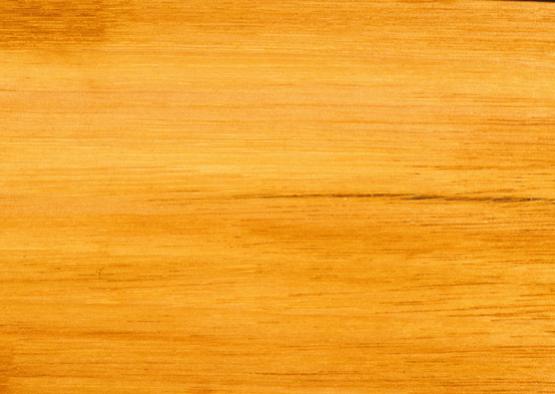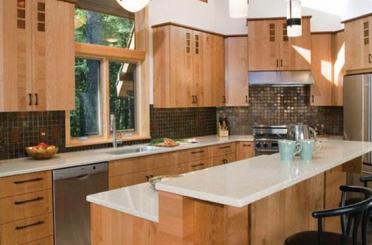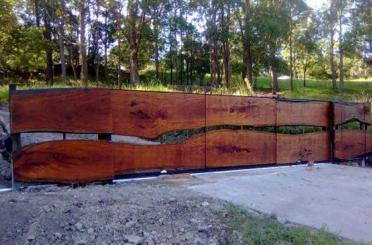Messmate is a well-known Australian hardwood with timber varying in colour from pale browns through to light yellows with subtle hints of peach.
Messmate Stringybark, Brown-top Stringybark, Australian Oak, Tasmanian Oak, Victorian Messmate
Eucalpytus obliqua

Messmate is a hardwood native to Tasmania and Victoria and the tablelands of New South Wales and southern Queensland. It has been known to grow to 90 metres tall, with a trunk up to three metres in diameter.
A well-known Australian hardwood that is in high demand for a wide variety of applications, messmate is often sold with mountain ash as Tasmanian oak. It varies in colour from pale browns through to light yellows with subtle hints of peach. The sapwood is pale yellow to pale brown, with light brown heartwood. A species rich and warm in detail, it has an even, moderately coarse texture. The sometimes interlocking, straight grains feature beautifully defined rings. Gum veins are quite common. Messmate timber has moderate hardness and strength, but low durability. It splits easily and is susceptible to lyctid borer attack. It is relatively easy to work, glue and it bends well. It will readily accept stains, paints and polishes but can be difficult to impregnate with preservatives.
Messmate is mostly used for pulp production and general construction and manufacture, especially framing above ground (when protected), internal flooring, paneling, plywood, protected external use, internal joinery and furniture.
Shrinkage
| Very Low | Low | Medium | High | Very High | |
|---|---|---|---|---|---|

|

|

|
|||
Tangential : |
11.30%
|
||||
Radial : |
5.10%
|
||||
Unit Movement Tangential: |
0.36%
|
||||
Unit Movement Radial: |
0.23%
|
Strength Group

Very High |
High |
Reasonably High |
Medium High |
Medium |
Reasonably Low |
Low |
Very Low |
||
Unseasoned: |
S1 |
S2 |
S3 |
S4 |
S5 |
S6 |
S7 |
S8 |
|
|---|---|---|---|---|---|---|---|---|---|
 |
|||||||||
Seasoned: |
SD1 |
SD2 |
SD3 |
SD4 |
SD5 |
SD6 |
SD7 |
SD8 |
|
 |
Stress Grade

| Structural No. 1 |
Structural No. 2 |
Structural No. 3 |
Structural No. 4 |
Structural No. 5 |
|
Unseasoned: |
F17 |
F14 |
F11 |
F8 |
F7 |
Seasoned: |
F27 |
F22 |
F17 |
F14 |
F11 |
Density per Standard

Seasoned: |
770kg/m3
|
|---|---|
Unseasoned: |
1090kg/m3
|
Joint Group

Very High |
High |
Reasonably High |
Medium |
Low |
Very Low |
|
Unseasoned: |
J1 |
J2 |
J3 |
J4 |
J5 |
J6 |
|---|---|---|---|---|---|---|
 |
||||||
Seasoned: |
JD1 |
JD2 |
JD3 |
JD4 |
JD5 |
JD6 |
 |
Colour

| White, yellow, pale straw to light brown | Pink to pink brown | Light to dark red | Brown, chocolate, mottled or streaky | |
 |
||||
Mechanical Properties
Modulus of Rupture - Unseasoned: |
71
|
|---|---|
Modulus of Rupture - Seasoned: |
118
|
Modulus of Elasticity - Unseasoned: |
12
|
Modulus of Elasticity - Seasoned: |
15
|
Maximum Crushing Strength - Unseasoned:  |
37
|
Maximum Crushing Strength - Seasoned: |
64
|
Impact - Unseasoned: |
15
|
Impact - Seasoned: |
16
|
Toughness - Unseasoned: |
Medium - 15 - 24 Nm
|
Toughness - Seasoned: |
Medium - 15 - 24 Nm
|
Hardness - Unseasoned: |
5.3
|
Hardness - Seasoned: |
7.3
|
Durability
| Low | Moderate | Reasonably High | High | |
| (0 - 5 yrs) | (5 - 15 yrs) | (15 - 25 yrs) | (more than 25 yrs) | |
In-Ground: |
 |
|||
| (0 - 7 yrs) | (7 - 15 yrs) | (15 - 40 yrs) | (More than 40 yrs) | |
Above ground: |
 |
|||
| (0 - 20 yrs, usually < 5) | (21 - 40 yrs) | (41 - 64 yrs) | (More than 60 yrs) | |
Marine Borer Resistance: |
 |
Lyctid Borer Susceptibility: |
Susceptible |
|---|---|
Lyctid Borer Susceptibility - Other: |
|
Termite Resistance: |
Not Resistant
|
Fire Properties
| 0 | 1 | 2 | 3 | 4 | 5 | 6 | 7 | 8 | 9 | 10 | 11 | 12 | 13 | 14 | 15 | 16 | 17 | 18 | 19 | 20 | |
EFH Ignitibility: |
| 0 | 1 | 2 | 3 | 4 | 5 | 6 | 7 | 8 | 9 | 10 | |
EFH Spread-of-Flame Index: |
|||||||||||
EFH Smoke-Developed Index: |
Critical Radiance Flux - Lower: |
>2.2 and <4.5 |
|---|---|
Critical Radiance Flux - Higher: |
>2.2 and <4.5 |
Smoke Development Rate: |
<750
|
| 1 - non-combustible | 2 - reasonably non-combustible | 3 - slightly combustible | 4 - combustible | |
Fire Properties Group |
Average Specific Extinction Area: |
<250
|
|---|---|
Bushfire Resistance: |
BAL 12.5 and 19 – All AS3959 required applications
|
Messmate varies in colour from pale browns through to light yellows with subtle hints of peach. It is a species rich in detail with an even texture and beautifully defined growth rings. Gum veins are common.
Mainly used for pulp production and general construction and manufacture, messmate can be employed for framing above ground (when protected), internal flooring, panelling, plywood, protected external use, internal joinery and furniture.
With moderate hardness and strength but low durability messmate works, glues and bends easily. It readily accepts stains, paints and polishes but can be difficult to impregnate with preservatives.

Joinery

Fencing

Flooring
Allied Forest Products

Australian Solar Timbers
Australian Timber
Britton Timbers
Dekhar Outdoors

Dromana Discount Timber
DTM Timber

Fewings Joinery Pty Ltd

Forest Strategy Pty Ltd

Garde Timber Pty Ltd
Lemlex Joinery

Lifestyle Furniture

Market Timbers

Mathews Timber Pty Ltd

Matilda Veneer

Outlast Timber Supplies

Pentarch Forestry

Ridgewood Timber Pty Ltd

Ta Ann Tasmania Pty Ltd

Three(3)DM Pty Ltd

Timber Blitz Pty Ltd

Timber Revival








